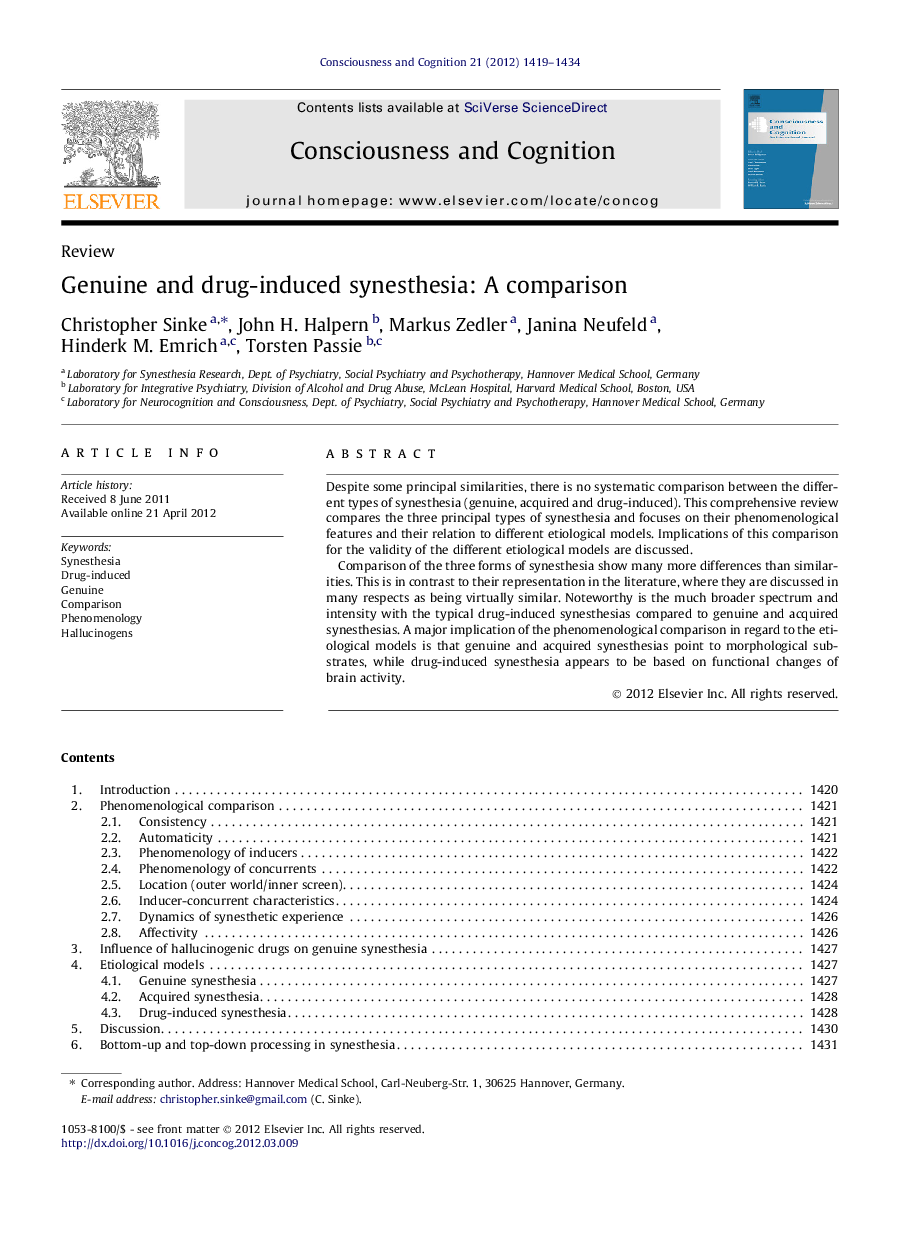| Article ID | Journal | Published Year | Pages | File Type |
|---|---|---|---|---|
| 927630 | Consciousness and Cognition | 2012 | 16 Pages |
Despite some principal similarities, there is no systematic comparison between the different types of synesthesia (genuine, acquired and drug-induced). This comprehensive review compares the three principal types of synesthesia and focuses on their phenomenological features and their relation to different etiological models. Implications of this comparison for the validity of the different etiological models are discussed.Comparison of the three forms of synesthesia show many more differences than similarities. This is in contrast to their representation in the literature, where they are discussed in many respects as being virtually similar. Noteworthy is the much broader spectrum and intensity with the typical drug-induced synesthesias compared to genuine and acquired synesthesias. A major implication of the phenomenological comparison in regard to the etiological models is that genuine and acquired synesthesias point to morphological substrates, while drug-induced synesthesia appears to be based on functional changes of brain activity.
► The phenomenology and etiology of different forms of synesthesia is compared. ► The different forms show more differences than similarities in the compared features. ► As such they cannot yield important information about each other. ► Drug-induced synesthesia is caused by functional aberrations. ► The other forms are most probably based on morphological features within the CNS.
